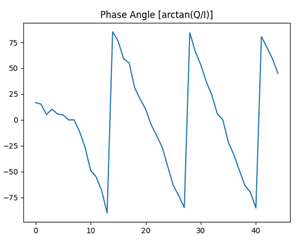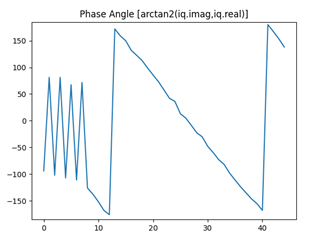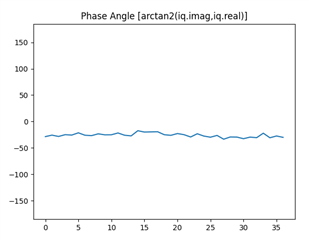I've successfully built the 'direction_finding_connectionless_tx' project and flashed that to an nRF52833dk, and built the 'direction_finding_connectionless_rx' project with some changes and flashed that to another nRF52833dk connected to a Nordic PCA20054 12-patch antenna array board. I wasn't able to get an official PCA20054, so I built my own from the design files, which makes me suspicious of the data and wanting to do some basic validation before getting too complicated.
As a basic sanity check, if I limit the receiver to only scan on a single antenna, within a single CTE scan all the samples should have very similar IQ values if the transmitter and receiver are stationary right? I know that normally IQ values would change as the signal is modulated, but I thought that's part of what makes the CTE special since it is completely unmodulated giving a constant signal so the differences between different antennas could be compared.
Plotting the phase angle over time from the IQ samples taken from a single antenna gives me the following graph:
Amplitudes appear to remain relatively constant, but the phase angle is constantly falling and I'm not sure why. It appears to be falling at a relatively constant rate which feels like it might be a good thing, but if so I'm missing something.
Thanks for any insight!




